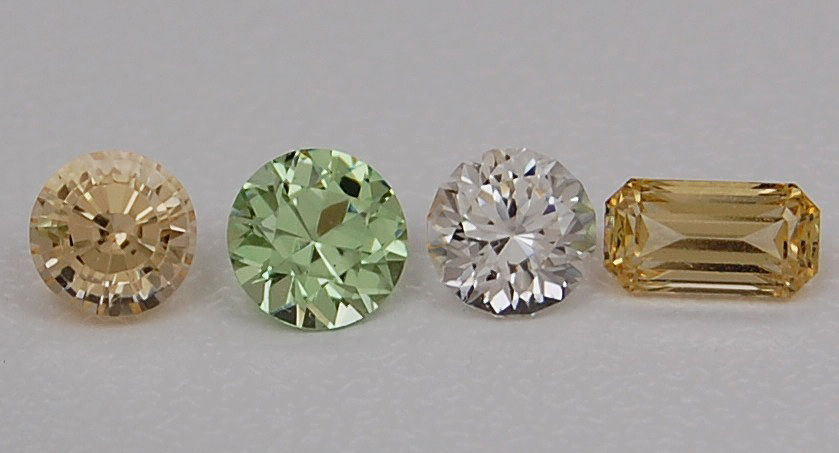
Introduction: Grossular is a species of garnet. It has two well known varieties, namely hessonite and tsavorite. Hessonite occurs in medium to dark tones of yellowish-orange to reddish-orange while
tsavorite is intense green to yellowish-green in color. Grossular garnets also occur in a light, almost pastel, yellow, green and colorless although colorless is rare. Data for hessonite and tsavorite will be
listed on their own page. This section will highlight the lighter tones known as grossular.
Colors: light to medium light yellow, green and colorless
Clarity: Grossular garnets are of clarity Type II. Gems in this type typically grow with some minor inclusions in nature that may be eye visible but usually are well hidden or require magnification.
Stone Sizes: Some grossulars may be available from time to time approaching 10 carats but mostly seen in sizes of less than 3 carats. Colorless stones are rare over 1 ct sizes.
Localities: Most grossular garnets originate from Tanzania.
Treatments: None
Gemology:
-Refractive Index: 1.740 (+0.020,-0.010)
-Birefringence: None (singly refractive)
-Optic Character: Singly refractive
-Dispersion: 0.028
Specific Gravity: 3.61 (+0.12, -0.04)
-Hardness: 7-7.5
-Toughness: Fair to good
-Chemical Composition: Ca3Al2(SiO4)3
-Cause of Color: iron in yellow gems and vanadium with traces of chromium in green colors
-Absorption Spectra: Not distinctive
-Fluorescence: near colorless to light green - inert to weak orange in LW and weak yellow-orange in SW.
yellow - inert to weak orange (LW and SW)
-Cleavage: None
-Phenomena: None
Name: Grossular is named after R. grossularia, the botanical name for the gooseberry, because of the resemblance of the color (pale green) to that of the plant.
Dates: All species of garnets can be used as the birthstone for January. Garnets are also the gem of choice for second anniversaries.
Care: Ultrasonics are usually safe but risky with liquid inclusions. Steam cleaners should never be used. The safest method for cleaning is with warm soapy water. Abrupt temperature changes will likely cause fracturing.
